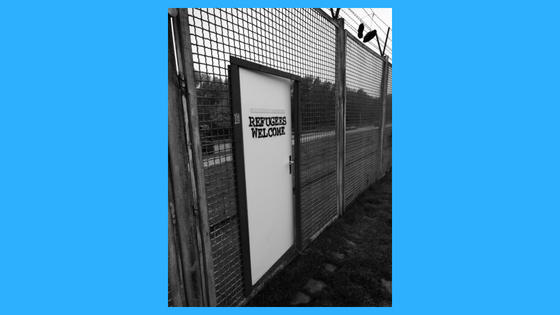Welcoming the Refugee – Best Practices to Help the Displaced

Refugees seek a safe and welcoming space to call home. Public libraries can offer support to help with transition to a new country. Libraries Serve Refugees and Project Welcome are two online spaces where librarians to share information and best practices to serve refugees, immigrants and displaced persons.
The Department of Homeland Security defines a refugee as “a person outside his or her country of nationality who is unable or unwilling to return… because of persecution or a well-founded fear of persecution on account of race, religion, nationality, membership in a particular social group, or political opinion.” The person is someone who has been forced to flee his or her country because of persecution, war, violence or natural disaster. Refugees differ from immigrants. Immigrants are defined as people who choose to live permanently in a foreign country.1
World refugee numbers are at the highest levels ever seen, exceeding even the time of World War II. According to Office of the United Nations High Commissioner for Refugees (UNHCR), 24,559 refugees resettled into the United States last year. Since 1975, the U.S. has welcomed more than three million refugees from all over the world, who have settled in all 50 states.2
Serving the needs of this population requires fine-tuning of public library services. Refugees are often learning a new language as well as new customs. According to UNHCR, over half of school-age refugees did not go to school in 2016. Public libraries can serve as a welcoming entry point and are positioned to provide specialized educational opportunities.
Libraries Serve Refugees brings together resources, stories and best practices from libraries across the country. You can find toolkits on a various subjects including culturally responsive approaches. It also includes links to government resources on refugee resettlement statistics and information on processes. Topics include advocacy, employment, government agencies, health, legal aid, learning English and youth and family. The site is sponsored by Urban Libraries Unite, a professional group that aims to build community-centered libraries. Librarians who wish to contribute to this new resource can submit their ideas via webform.
Another resource for librarians serving refugees is Project Welcome, an IMLS-funded project of the Mortenson Center for International Library Program and the American Library Association. The site includes both national and international library best practices. The site includes an action guide to help librarians learn, collaborate, connect and support this audience.
While serving refugees in public libraries is not new, the demand for this assistance continues to grow. By learning from successes around the country, local librarians can build responses based on the unique needs of the people in their communities.
Resources
1 “Refugees and Asylees.” Department of Homeland Security. April 30, 2018. Accessed August 12, 2018. https://www.dhs.gov/immigration-statistics/refugees-asylees.
2 “How to Help Refugees – Aid, Relief and Donations | USA for UNHCR.” Refugee Crisis in Yemen: Aid, Statistics and News | USA for UNHCR. Accessed August 12, 2018. https://www.unrefugees.org/.
Tags: helping refugees at the library, libraries serve refugees







